h3. The History of Malbec
Back in the Middle-Ages, Malbec was planted all over southern France. But it wasn’t known as Malbec. It had over a thousand synonyms, and besides Medieval wine drinkers knew precious little about grape varieties. But there was no doubt Malbec was highly thought of, especially up-river of Bordeaux, where it was blended with the even darker Tannat grape to make the famous ‘Black Wine of Cahors’.
The wine was shipped downstream where the Bordelais taxed it almost out of existence. For Bruce Jack, a major player in South African wine, “it was one of the great travesties of winemaking history. Cahors went from 40,000 hectares of vineyards down to less than 4,000. Today the region just limps along, and as you drive through the valley you see these broken-down châteaux that in their day were as magnificent as Haut Brion or Lafite.”
While Bruce Jack has given it pride of place in his own vineyard on the Cape, there is no doubt where Malbec’s real spiritual home is these days. It is Argentina that has truly taken this rich, complex, dusky grape to its heart. Today it is planted everywhere from the cacti-strewn vineyards of Salta, up by Bolivia, to the northern edge of Patagonia, 2,000 miles (3,200km) south.
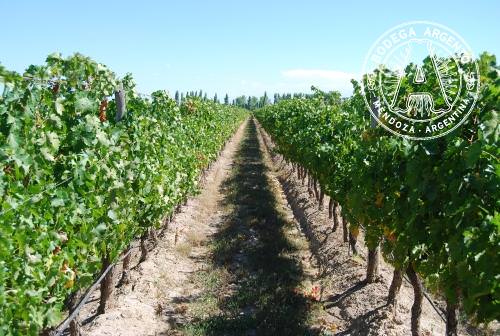
h3. Malbec in Argentina
Malbec was one of a number of vines introduced into Argentina in 1868 by Miguel Pouget, a French agronomist who had been hired to help improve the country’s wines. It seems the particular clone he brought over has since disappeared in France. Argentine Malbec has smaller grapes and tighter bunches than the type grown in Cahors.
While the French always knew how good Malbec can be, it was never an easy grape to grow. There was a perennial risk of frost, rot and something called Coulure – brought on by damp, cold weather. Transported to the dry heat and abundant sunshine of an Argentine summer, the grape flourished in its newfound home, and by the 1950s plantings had reached 50,000 hectares.
In Argentina it was almost too easy to grow. Producers who turned up the irrigation taps were rewarded with big yields of so-called vino flocco – a blowsy, soft-centred red wine that slipped down Argentine throats with consummate ease. Not that all of it was pure Malbec, since the grape was often mixed with other varieties like Merlot and known generically as ‘Uva Francesa‘ (the French grape).
Within thirty years, plantings of Malbec had shrunk by over a third, often to make room for jug wine varieties like Criolla which could be pumped out in huge volumes. Meanwhile, many top producers believed Cabernet Sauvignon was the grape that was going to make Argentina famous. Indigenous Cabernets are still very popular in Buenos Aires.
No one was asking for Argentine Malbec because no one had heard of it. But once the word spread, with the help of foreign winemakers who started coming here from the late 1980s onwards, Argentina slowly woke up to its star grape. Rather than simply join the varietal sweepstakes late in the day with its own take on international grapes like Cabernet and Chardonnay, the country had something far more original to offer.
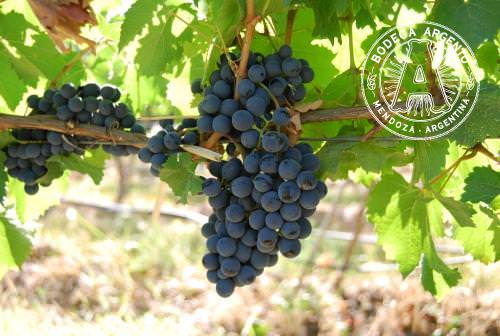
h3. Malbec’s Unique Style of Wine
The first thing you notice about Argentine Malbec is its color – a thick, lustrous, inky-black purple that almost stains the glass. At the annual Argentine tasting in London, everyone develops amazing blue lips. Good examples are often surprisingly floral and aromatic with a scent of violets and plums. This translates into sweet, well-rounded flavors on the tongue and sometimes a spicy edge softened by smooth, velvety tannins. The balance of fruit and tannin is what makes a top Malbec so perfect with a juicy, tender steak.
While Malbec will never be exactly shy or understated, it does vary considerably in style. Hardly surprising when you consider all the different vineyards it comes from. Down in the Patagonian south it is grown beside apple orchards and poplar trees which protect the vines from the wind. Take an overnight bus north to Mendoza and the conditions are much warmer and drier. Though the province’s low-lying vineyards are twice as high as Rio Negro’s, the style of Malbec produced is fairly soft and simple. Pleasant enough when produced with care, but tending towards the old-style ‘vino flocco‘ when not.
Yet once you reach 2,600-3,300 feet (800-1,000m) above sea level, Malbec comes into focus with good acidity and much better defined flavors. Climb higher still and the wine becomes more aromatic, a little firmer and with more of a fresh fruit character. These different styles, defined by altitude, can be blended together or kept separate to express a particular vineyard area. Alternatively a winemaker might blend in Cabernet, Merlot, Tannat or any number of other grapes to create a new wine altogether. With Malbec the possibilities are endless.

Tom Bruce-Gardyne

Latest posts by Tom Bruce-Gardyne (see all)
- Own Your Piece of the Dream – Vineyard Sharing in Mendoza - August 8, 2012
- Argentina Wine Regions: San Juan - June 19, 2012
- Beyond Steak & Empanadas – Argentina’s New Wave Cuisine - March 20, 2012

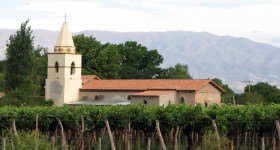 450 Years of Wine in Argentina – A Potted History
450 Years of Wine in Argentina – A Potted History 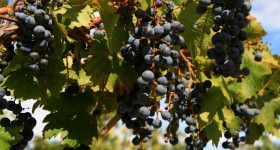 Argentinian Malbecs vs. The World
Argentinian Malbecs vs. The World  Grape Expectations: Less Common Varieties of Argentina Wine
Grape Expectations: Less Common Varieties of Argentina Wine 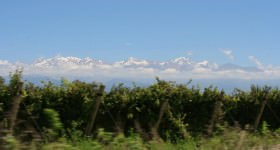 Top 10 Curious Facts About Argentina Wine
Top 10 Curious Facts About Argentina Wine  The Global March of Malbec
The Global March of Malbec 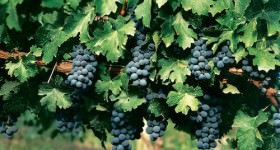 Malbec World Day: A Celebration of Wine
Malbec World Day: A Celebration of Wine  Putting the Magic in Malbec – the Art of Microclimatic Blending
Putting the Magic in Malbec – the Art of Microclimatic Blending 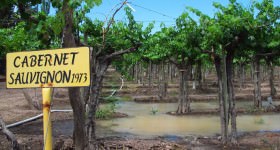 Cabernet Sauvignon – Argentina’s Next Big Red
Cabernet Sauvignon – Argentina’s Next Big Red  Think Outside the Glass: Other Ways to Enjoy Malbec
Think Outside the Glass: Other Ways to Enjoy Malbec 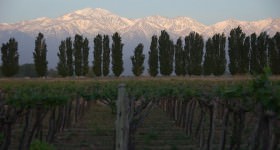 Taste the Diversity: A Guide to Argentina’s Wine Regions
Taste the Diversity: A Guide to Argentina’s Wine Regions 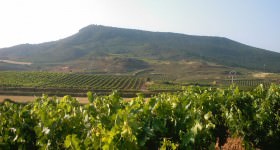 Know La Rioja, the famous wine region of Argentina
Know La Rioja, the famous wine region of Argentina 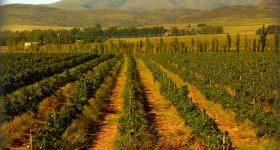 The Argentina Wine Making Process: Malbec Blends
The Argentina Wine Making Process: Malbec Blends
[…] Blog, Commentaires sur autres blogs, Histoire | Billet publié le 20 avril 2010 sur le site The real Argentina […]
[…] mark. So it’s a fortnight of abstemiousness. The photo shows an Argentine vineyard planted in Malbec. Which isn’t quite the same grape as the French Malbec (Côt) grown in Cahors. Soon, someone […]
[…] photos from http://www.gasconwine.com and https://www.therealargentina.com […]
[…] is no exception. Scratch the surface and look beyond the big red hitter Malbec and its aromatic white partner Torrontés, plus the more international Cabernet Sauvignon, Merlot, […]
Very good news
[…] deep in colour, with plum flavours alongside ferric, inky notes too. Malbec has found a second home in Argentina, where it is the country’s signature red grape. In Argentina, the mineral notes subside […]
[…] Argentinian Malbec Wine: A Guide to the Grape’s History and Unique Style […]